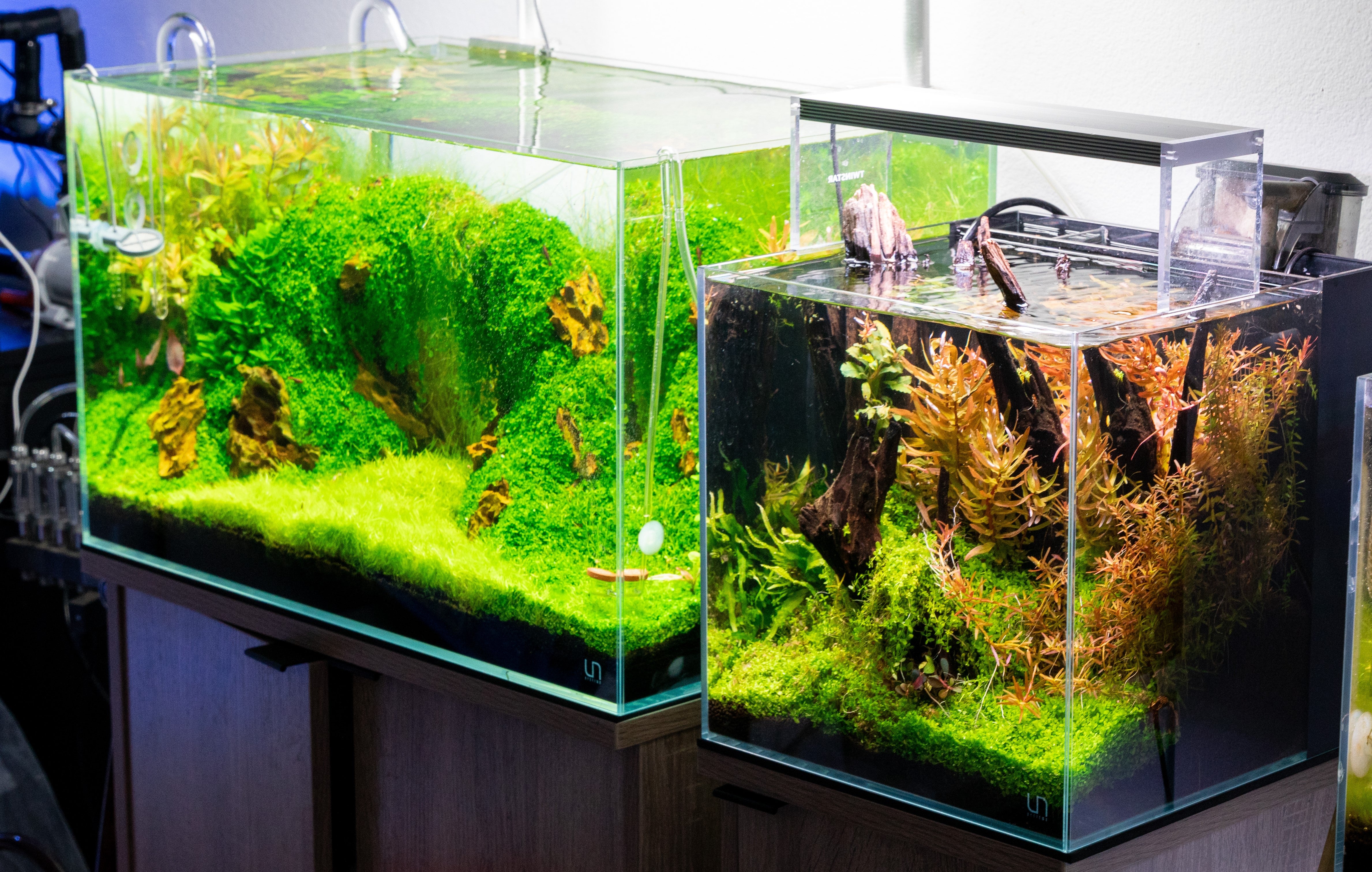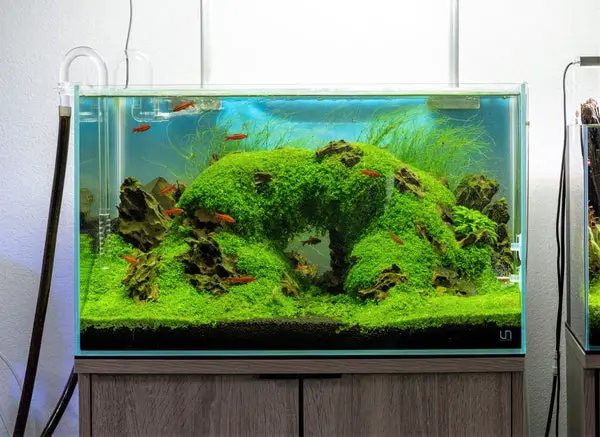Aquascaping is the art of creating a stunning underwater landscape using plants, rocks, and other natural elements. If you’re an aquarium enthusiast, you’ve probably heard of this trend and may even be interested in trying it out. In this article, we’ll explore the world of aquascaping and provide tips and ideas for creating a beautiful and healthy planted aquarium.
From selecting the right plants and substrate to designing a layout that’s pleasing to the eye, there’s a lot to consider when it comes to aquascaping. Whether you’re a beginner or an experienced aquarist, we’ll provide valuable insights to help you create an aquatic masterpiece that’s sure to impress. Join us as we dive into the world of aquascaping and unleash your creativity!
Aquascaping is the art of designing and arranging aquatic plants, rocks, and driftwood in an aesthetically pleasing way in your planted aquarium. The key to a successful aquascape is to create a natural-looking environment that mimics the underwater world. Start by selecting the right plants and hardscape materials, then arrange them in a visually appealing way. Consider the size and shape of your aquarium, as well as the lighting and water flow, to create a balanced and thriving ecosystem. Don’t be afraid to experiment and try new things.

Aquascaping Your Planted Aquarium: Tips and Ideas
Aquascaping is the practice of designing and arranging aquatic plants, rocks, and other decorations in aquariums. It is both a form of art and a way to create a healthy and beautiful environment for aquatic life. If you are interested in aquascaping your planted aquarium, here are some tips and ideas to get you started.
1. Choose the Right Plants
The first step in aquascaping your planted aquarium is to choose the right plants. Consider the size of your aquarium, the lighting conditions, and the types of fish you have. Some plants require high light levels, while others can thrive in low light. Some plants also need specific nutrients, so be sure to research the requirements of each plant before making your selection.
Consider starting with easy-to-grow plants such as Java fern, Anubias, or Vallisneria. These plants can tolerate a wide range of lighting and nutrient conditions and are perfect for beginners.
2. Create a Focal Point
A focal point is a visually interesting element that draws the eye and creates a sense of balance in the aquarium. Rocks, driftwood, and other decorations can be used to create a focal point. Consider placing these elements off-center to create a more dynamic and interesting composition.
3. Use the Rule of Thirds
The rule of thirds is a composition technique used in photography and art. It involves dividing the frame into thirds both vertically and horizontally and placing the focal point at one of the intersections. This creates a more visually interesting and balanced composition.
4. Consider the Size and Placement of Rocks and Decorations
When choosing rocks and decorations, consider the size and placement. Large rocks can be used to create a sense of scale and depth, while smaller decorations can be used to fill in gaps and add interest. Be sure to also consider the placement of each element in relation to the focal point and the overall composition.
5. Use Contrast
Contrast is an important element in aquascaping. It involves using contrasting colors, textures, and shapes to create visual interest. For example, placing a dark-colored plant next to a light-colored one can create a striking contrast.
6. Experiment with Different Layouts
Aquascaping is a creative process, and there is no right or wrong way to do it. Experiment with different layouts and compositions to find the one that works best for your aquarium. Don’t be afraid to try new things, and if something doesn’t work, you can always start over.
7. Use Substrate to Create Depth
Substrate, or the material at the bottom of the aquarium, can be used to create depth and interest. Consider using different types of substrate, such as sand, gravel, or soil, to create a layered effect. You can also use substrate to create hills or valleys, which can add interest to the overall composition.
8. Consider the Needs of Your Fish
When designing your aquascape, be sure to consider the needs of your fish. Some fish require hiding places or areas to explore, while others prefer open spaces. Be sure to also consider the swimming patterns of your fish and create a layout that allows them to swim freely.
9. Maintain Your Aquascape
Once you have created your aquascape, it is important to maintain it properly. This includes regular water changes, pruning and trimming plants, and removing any debris or dead plant matter. Be sure to also monitor the water parameters, such as pH and nitrate levels, to ensure a healthy environment for your fish and plants.
10. Benefits of Aquascaping
Aquascaping has several benefits beyond just creating a beautiful aquarium. It can help improve water quality, reduce stress in fish, and promote natural behaviors. It can also be a relaxing and rewarding hobby that allows you to express your creativity and connect with nature.
In conclusion, aquascaping your planted aquarium is a fun and rewarding way to create a beautiful and healthy environment for your aquatic life. With these tips and ideas, you can create a stunning aquascape that will be the envy of all your friends.
Frequently Asked Questions
Aquascaping is a popular practice among aquarium enthusiasts. It involves arranging aquatic plants, rocks, and other decorations in an aesthetically pleasing way. If you are new to aquascaping, you may have several questions. Here are the answers to some of the most frequently asked questions about aquascaping your planted aquarium.
1. How do I choose the right plants for my aquascape?
Choosing the right plants for your aquascape is essential to create a beautiful and healthy aquarium. First, consider the lighting and nutrient needs of the plants. Some plants require high light and nutrient levels, while others can thrive in low light and nutrient levels. Second, think about the size and growth rate of the plants. You should choose plants that are proportional to your aquarium’s size and don’t grow too fast, which can lead to overcrowding. Additionally, you can select plants based on their color, texture, and shape to create a visually appealing aquascape.
When selecting plants, make sure to research their requirements and compatibility with other aquatic species. You can also seek advice from experienced aquascapers or aquarium professionals to ensure that you choose the right plants for your aquarium.
2. How do I create a natural-looking aquascape?
Creating a natural-looking aquascape involves replicating the natural environment of aquatic plants and animals. You can achieve this by using natural materials such as rocks, driftwood, and substrate. Additionally, you can use plants that are native to the same region to create a cohesive and authentic look.
When arranging the plants and decorations, consider the principles of composition, such as balance, contrast, and focal points. You can use the rule of thirds to create a balanced and visually appealing layout. It involves dividing your aquarium into thirds and placing the plants and decorations along these imaginary lines.
Remember to avoid overcrowding your aquarium and leave enough space for the plants to grow. You can also incorporate open areas to create a sense of depth and movement.
3. How do I maintain a healthy aquascape?
Maintaining a healthy aquascape requires regular care and attention. First, you should ensure that the water parameters, such as pH, temperature, and ammonia levels, are within the appropriate range for your aquatic species. Second, you should provide adequate lighting and nutrient levels for your plants. Third, you should perform regular water changes to remove excess nutrients and debris.
Additionally, you should prune and trim your plants regularly to prevent overcrowding and promote healthy growth. You should also remove any dead or decaying plant matter and vacuum the substrate to prevent the buildup of waste.
Lastly, you should monitor your aquarium for any signs of disease or pests and take appropriate action to prevent the spread of illness.
4. Can I aquascape a small aquarium?
Yes, you can aquascape a small aquarium. In fact, aquascaping a small aquarium can be more challenging and rewarding than a larger one. When working with a small aquarium, you should consider the size and growth rate of the plants and decorations carefully. You should also avoid overcrowding and use the principles of composition to create a visually appealing layout.
Some popular plants for small aquariums include Java moss, Anubias nana, and Cryptocoryne wendtii. You can also use small rocks, driftwood, and substrate to create a natural-looking aquascape.
5. How do I create a low-maintenance aquascape?
Creating a low-maintenance aquascape involves selecting plants and decorations that require minimal care and attention. You can choose slow-growing plants that don’t require frequent pruning or trimming. Additionally, you can use hardy and easy-to-care-for species that can tolerate a wide range of water parameters.
You can also incorporate low-maintenance decorations, such as rocks and driftwood, that don’t require cleaning or maintenance. Lastly, you can use a simple and efficient filtration system to reduce the need for frequent water changes. However, remember that even low-maintenance aquascapes require regular care and attention to maintain a healthy and beautiful aquarium.

Complete Aquascaping Beginners Guide – Learn ALL The Basics!
In conclusion, aquascaping your planted aquarium is an exciting and rewarding experience. With the right tips and ideas, you can create a stunning underwater landscape that will impress everyone who sees it. Remember to choose the right plants for your aquarium, consider the lighting and CO2 levels, and think about the overall design before you start. By following these guidelines, you can create a beautiful and healthy environment for your aquatic pets to thrive in.
Additionally, don’t be afraid to experiment with different shapes, colors, and textures to create a unique and personalized look. Aquascaping is a form of art, and just like any other art form, it requires creativity and imagination. Take inspiration from nature, other aquariums, or even your own backyard to come up with fresh ideas.
Finally, remember that aquascaping is not just about aesthetics, but also about providing a suitable habitat for your fish and plants. Regular maintenance and care are essential to keep your aquarium healthy and thriving. With dedication and patience, you can create a beautiful and functional underwater world that will bring you joy for years to come.

